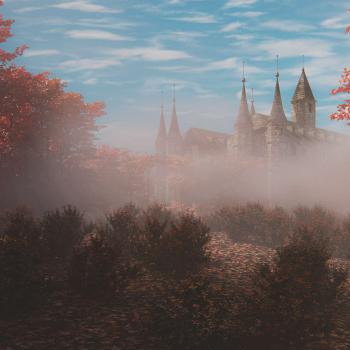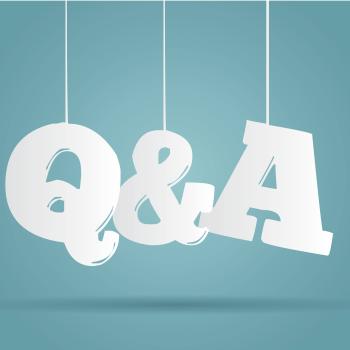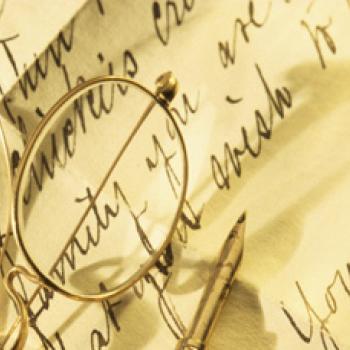Students read and analyze fairy tales, identifying their common elements. They then write their own "fractured" fairy tales by changing one of the literary elements found in the original.

Once Upon a Time Rethought: Writing Fractured Fairy Tales

Grades
|
Opening the Door for Reading: Sharing Favorite Texts to Build Community
3 - 6
Lesson Plan
| Standard Lesson
In this lesson, students build classroom community by exploring environmental print and a teacher-created display that focuses on a favorite book. They then create and share their own presentations.

Grades
|
How Does My Garden Grow? Writing in Science Field Journals
K - 2
Lesson Plan
| Standard Lesson
Students plant a garden and study its growth using the inquiry process of questioning and exploring. As they research and study, students record their observations in a field journal.

Grades
|
Literature as a Jumping Off Point for Nonfiction Inquiry
3 - 5
Lesson Plan
| Unit
Students use text sets to research a topic inspired by a fiction book they have read. A text set is a collection of multiple text genres with a single focus.

Grades
|
Our Community: Creating ABC Books as Assessment
K - 2
Lesson Plan
| Standard Lesson
Students create alphabet books, which are used as an integrated assessment with science, health, social studies, and any other content area. This lesson plans looks at the theme of community.

Grades
|
Naming in a Digital World: Creating a Safe Persona on the Internet
9 - 12
Lesson Plan
| Standard Lesson
Students explore naming conventions in digital and non-digital settings then choose and explain specific names and profiles to represent themselves online.

Grades
|
Cooking Up Descriptive Language: Designing Restaurant Menus
6 - 8
Lesson Plan
| Standard Lesson
Students explore the menu genre by analyzing existing menus from local restaurants. They review adjectives and descriptive writing and then work in groups to create their own custom menus.

Grades
|
Looking at Landmarks: Using a Picture Book to Guide Research
3 - 5
Lesson Plan
| Standard Lesson
This lesson uses Ben's Dream by Chris Van Allsburg to highlight ten major landmarks of the world. Students research the landmarks and present their findings to the class.

Grades
|
Question and Answer Books--From Genre Study to Report Writing
3 - 5
Lesson Plan
| Unit
After exploring several question and answer books on a variety of topics, students research a topic and create their own class question and answer book.

Grades
|
Literary Parodies: Exploring a Writer's Style through Imitation
9 - 12
Lesson Plan
| Standard Lesson
This lesson asks students to analyze the features of a poet's work then create their own poems based on the original model.

Grades
|
Paying Attention to Technology: Reviewing a Technology
9 - 12
Lesson Plan
| Standard Lesson
Students read and analyze technology reviews to establish the characteristics of the genre. They then compose their own reviews on a technology of their choice.

Grades
|
Focusing Reader Response Through Vocabulary Analysis
6 - 8
Lesson Plan
| Standard Lesson
Students suggest and categorize words that they associate with a novel they have recently read, ranging from details about the plot to feelings about a character.

Grades
|
Developing Reading Plans to Support Independent Reading
6 - 8
Lesson Plan
| Standard Lesson
Students analyze their past readings and use that knowledge to create reading plans for the future.

Grades
|
A Bear of a Poem: Composing and Performing Found Poetry
K - 2
Lesson Plan
| Standard Lesson
Children find favorite words, phrases, and sentences from familiar stories. Working together, they combine their words and phrases to create a poem. The poem is then shared as performance poetry.

Grades
|
Focus on First Lines: Increasing Comprehension through Prediction Strategies
9 - 12
Lesson Plan
| Recurring Lesson
Students examine opening sentences of texts they will read during a unit or course and make predictions. They return to their predictions throughout the course as they read the texts.

Grades
|
Analyzing Symbolism, Plot, and Theme in Death and the Miser
9 - 12
Lesson Plan
| Standard Lesson
Students apply the analytical skills that they use when reading literature to an exploration of the underlying meaning and symbolism in Hieronymous Bosch's early Renaissance painting Death and the Miser.

Grades
|
As Slippery as an Eel: An Ocean Unit Exploring Simile and Metaphor
K - 2
Lesson Plan
| Standard Lesson
Students play with simile and metaphor as they study the ocean and use figurative language to write a class book about it.

Grades
|
Connotation, Character, and Color Imagery in The Great Gatsby
9 - 12
Lesson Plan
| Unit
Students explore the connotations of the colors associated with the characters in F. Scott Fitzgerald's The Great Gatsby.

Grades
|
Discovering Traditional Sonnet Forms
9 - 12
Lesson Plan
| Standard Lesson
Students read sonnets, charting the poems' characteristics and using their observations to deduce traditional sonnet forms. They then write original sonnets, using a poem they have analyzed as a model.

Grades
|
Argument, Persuasion, or Propaganda? Analyzing World War II Posters
9 - 12
Lesson Plan
| Standard Lesson
Students analyze World War II posters, as a group and then independently, to explore how argument, persuasion and propaganda differ.